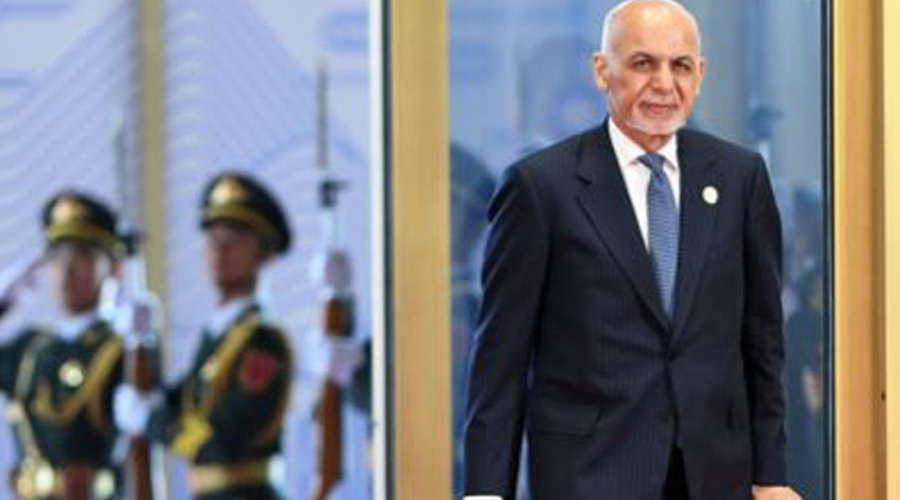With his military crumbling, President Ashraf Ghani of Afghanistan fired a crucial part of his command structure and brought in a new one. He created a nebulous “supreme state council”, announced months ago, that has hardly met. And as districts fall to the Taliban across the country, he has installed a giant picture of himself outside the airport’s domestic terminal.
On Friday, US officials announced the definitive closure of Bagram Air Base, the nerve centre of 20 years of American military operations in Afghanistan, in the functional end of the American war here. As the last troops and equipment trickle out of Afghanistan, an atmosphere of unreality has settled over the government and Kabul, the capital.
Americans have not been a visible presence in the city for years, so the US departure has not affected surface normality: Markets bustle and streets are jammed with homeward-bound civil servants by mid-afternoon. At night, the corner bakeries continue to be illuminated by a single bulb as vendors sell late into the evening.
But beneath the surface there is unease as the Taliban creep steadily towards Kabul.
“There’s no hope for the future,” said Zubair Ahmad, 23, who runs a grocery store on one of the Khair Khana neighbourhood’s main boulevards. “Afghans are leaving the country. I don’t know whether I am going to be safe 10 minutes from now.”
The government passport office has been jam-packed in recent days, filled with a jostling mob, even though visa options for Afghans are severely limited. Some of the humanitarian organisations on which the beleaguered citizenry depend said they would begin limiting the number of expatriate employees kept in the country, anticipating a worsening of the security climate.
The security blanket that the US provided for two decades haunts the Afghan government’s actions, inactions and policies, fostering an atrophying of any proactive planning, in the view of some analysts. If there is a plan to counter the Taliban advance, it is not evident as the government’s hold on the countryside shrinks.
Some intelligence assessments have said that the Afghan government could fall under pressure from the Taliban in six months to two years. If that happens, the outlook is likely to be grim for Ghani and his circle, as recent Afghan history demonstrates.
Several of his predecessors in the country’s top job have met violent ends.
“The environment is extremely tense,” said Omar Zakhilwal, a former finance minister, noting what he called an atmosphere of “semi-panic” in the government.
“It’s beyond a crisis,” he said, adding: “The mismanagement has led us to where we are today.”
The roots of the current breakdown within Ghani’s administration are three-fold, officials and security experts say: the delusion of security provided by the Americans, whose determination to leave was never fully believed by civilian or military leadership; the tactical disconnect between conventional Afghan forces and the more nimble guerrilla Taliban; and the reduction of the government to the person of Ghani himself and a handful of aides, foreign-educated, some with families safely abroad.
The first fatal weakness has been festering for years. With American might always ready to push the Taliban back, the inclination towards an aggressive self-defence posture withered.
“They didn’t have a strategic plan for when the Americans leave,” said General Hilaluddin Hilal, a former deputy defence minister.
Dr Abdullah Abdullah, the chairman of Afghanistan’s High Council for National Reconciliation, acknowledged as much at a recent meeting: “We were not ready for the decision to withdraw US troops from Afghanistan,” he said.
More than a quarter of the country’s 421 districts have been seized by the insurgents since early May, in a sweeping campaign that has largely targeted Afghanistan’s north and even seen some provincial capitals besieged by Taliban fighters.
In some places, government forces are surrendering without a fight, often because they have run out of ammunition and the government doesn’t send more supplies or reinforcements.
The tactical mismanagement of the Afghan military and police forces is a re-run on a smaller scale of losing battles fought against insurgent groups for 40 years.
“You have a highly centralised military fighting a war against a highly decentralised insurgency, fighting an irregular war,” said Tamim Asey, a former deputy minister of defence who now leads a think tank in Kabul. “That is a recipe for disaster.”
It is a lesson painfully inflicted, but barely learned, in over two centuries of warfare in Afghanistan. “We see history repeating itself in this country: A proxy insurgency is coming from rural areas to take power,” Asey said.
“It’s not about one person. It’s about the leadership,” said Hadi Khalid, a retired lieutenant general. “Our security leadership didn’t think it was its job to prepare a self-defence.”
Ghani’s newly appointed acting defence minister, General Bismillah Khan Mohammadi, a grizzled veteran of previous wars, declined an interview request, saying through a spokesman that he did not want to speak to the news media until he had a record of accomplishment.
Recent days have seen government forces regain control of key districts in the northern city of Kunduz. But since the new cabinet appointments, more than a dozen additional districts have fallen.
Humvees, weapons and piles of ammunition have fallen into Taliban hands, much of it paraded on videos released on social media by the group’s propagandists.
New York Times News Service










